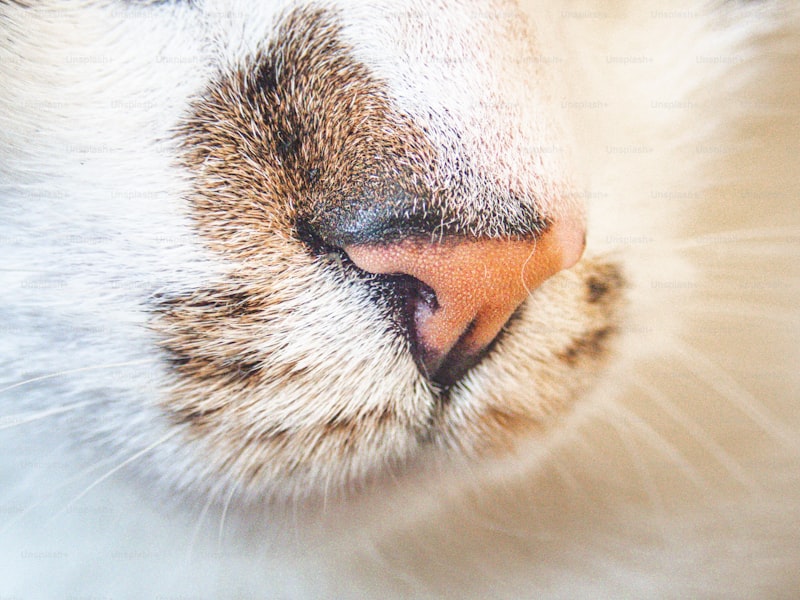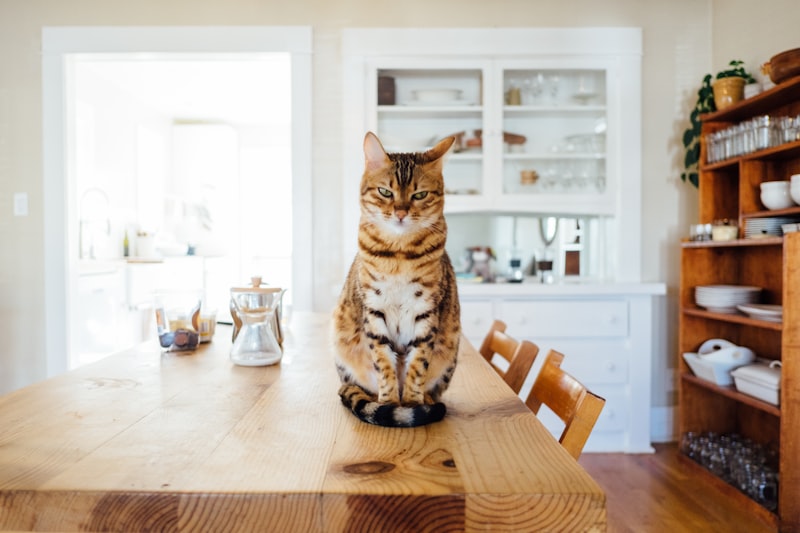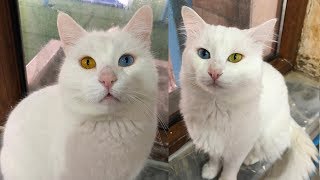So, how do you know if your kitty has a food allergy? Well, it usually starts with some pretty telltale signs. Maybe you’ve noticed your feline itching like they’re auditioning for a scratching post commercial, or they’ve got some odd gastrointestinal issues going on. Itching, vomiting, or diarrhea after eating their favorite chow? Those could be your first red flags waving for attention.
But here’s the kicker—figuring out what’s causing these reactions can feel like searching for a needle in a haystack. Not all cats react the same way, and sometimes it’s just about trial and error to pinpoint the culprit. It could be common ingredients like chicken, beef, or even grains lurking in their food. Ever thought about doing an elimination diet? It’s like a game of detective, where you slowly introduce new foods one by one, noting your cat’s reactions.
Now, onto treatment. The best part is, once you identify the trigger, you can switch to hypoallergenic cat food. Think of it as upgrading to a VIP menu tailored just for your cat’s needs! There are brands out there specifically designed for sensitive tummies that will have your furry buddy gobbling happily again.
So, keep an eye on those food labels and be your cat’s health hero. Instead of watching them struggle, take charge and transform mealtime into a delight for both of you. It’s all about ensuring your feline companion gets to enjoy their food without any of the unsettling side effects. Happy feeding!
Whiskers and Woes: Understanding Cat Food Allergies and Their Impact on Feline Health
Imagine your cat getting all itchy and uncomfortable after every meal. It could be a reaction to something as common as chicken or fish in their food. Yep, even the most beloved flavors can turn into foes! Symptoms can range from sneezing fits to skin irritations and, in some cases, gastrointestinal upset. You wouldn’t want to see your playful ball of fluff turn into a moody couch potato, right?
So, what’s the deal with cat food allergies? Well, it’s all about the immune system getting a bit overly dramatic. When a cat’s body perceives a specific protein or ingredient as a threat, it literally goes into battle mode, releasing histamines that cause those annoying allergic reactions. It’s like that friend who can’t handle spicy food and keeps crying even when everyone else is enjoying the heat!
But don’t fret! Identifying and managing food allergies is possible. Start by observing your cat’s reactions after meals. Do they paw at their face or excessively lick their fur? Keeping a food diary can help pinpoint culprits. Once you suspect an allergy, a vet visit is your best bet. They may suggest an elimination diet, where you try feeding your cat a limited-ingredient diet to see if symptoms improve. It’s like giving them a culinary vacation, sans the allergens!
Understanding cat food allergies isn’t just about the sneezes and itches; it’s about ensuring a happier, healthier life for your furry friend. After all, happy whiskers mean fewer woes!
Paws for Thought: How to Identify and Manage Cat Food Allergies Effectively
First up, how can you identify a cat food allergy? Keep an eye on your kitty’s behavior. Are they itching and scratching more than usual? Is their coat looking dull and lackluster? Pay attention to those hints! Some cats might develop gastrointestinal issues like vomiting or diarrhea, which definitely warrant a closer look at their diet. It’s all about connecting the dots.
Thinking of changing their food? Gradual transitions are key. Just like you wouldn’t jump into a freezing pool, your cat shouldn’t be thrown into a new diet all at once. Instead, mix the old food with the new over a week or so. This helps to mitigate potential reactions. You might want to explore hypoallergenic cat foods or limited-ingredient diets, which can often be lifesavers.
Once you suspect allergies, a visit to the vet is like calling in the cavalry. Professionals can recommend allergy tests or elimination diets that help pinpoint the problem. It’s similar to trying on clothes—you want to see what fits before making a commitment!
From Kibble to Calm: Effective Treatments for Your Cat’s Food Allergies
First off, let’s talk about the importance of identifying the allergens. Much like finding the culprit behind a mysterious stain on your carpet, it’s vital to pinpoint what is causing your cat’s discomfort. You might be surprised to learn that common ingredients in cat food, like chicken or grains, can trigger reactions. An elimination diet is a great starting point. Just like trying on clothes before buying, this method helps you find the perfect fit for your kitty’s diet.
Once you’ve figured out the offending ingredient, it’s time to explore some fantastic alternatives. Grain-free diets or cat food made with novel proteins—think rabbit or venison—can work wonders. It’s like switching from an old, worn-out shoe to a fresh pair that fits just right.

But dietary changes aren’t the only option on the table. Supplements like omega-3 fatty acids can be a game-changer, soothing the skin from the inside out, much like a warm blanket on a chilly night. If your cat’s allergies are particularly stubborn, consulting with a veterinarian about antihistamines or corticosteroids might be necessary. They can help quiet the itch and restore peace at home.
Finally, don’t forget about the power of a clean environment. Frequent vacuuming to remove allergens can help your cat breathe easier. Just think of it as giving your space a mini spa treatment—after all, a calm cat is a happy cat!
Is Your Cat Itching for Answers? Recognizing Symptoms of Food Allergies in Felines
First things first, keep an eye on their skin. Is it red, flaky, or even bumpy? These could be classic signs of an allergic reaction. If your cat is like a little ninja, constantly grooming, it could be that their skin is crying out for help. It’s sort of like having a persistent itch you just can’t scratch—frustrating, right?
You might also notice changes in their digestion. Is your cat experiencing more than their fair share of hairballs or strange stools? Think of it as their tummy sending an SOS. Sometimes, food allergies can manifest as vomiting or diarrhea, which is definitely not the kind of ‘gift’ you want to find on your carpet!
Another clue is their weight. If your once-spirited kitty seems listless or is losing weight blissfully, it’s another red flag. Food allergies can zap their energy and make them feel down. Imagine if your favorite snack suddenly didn’t agree with you; you wouldn’t feel like running around either!
Finally, pay attention to changes in behavior. Is your normally sweet kitty acting grumpy or withdrawn? Allergies can make them feel irritable, and who could blame them? Just like when we’re feeling under the weather, a little understanding goes a long way.
So, if your cat is itching for answers, keep these signs in mind—after all, communication is key, even if it’s through fur and meows!
Decoding the Digestive Dilemma: A Comprehensive Guide to Cat Food Allergies
Cat food allergies often manifest as those pesky skin irritations, excessive scratching, or even a storm of gastrointestinal issues. Imagine your kitty, who normally zooms around your living room like a playful tornado, suddenly becoming lethargic or grumpy. That’s not just a mood swing; it could be a food allergy rearing its ugly head. The tricky part? Identifying the culprit isn’t always straightforward.
Many cats react poorly to common ingredients like beef, chicken, or even certain grains. You’d think a meaty treat would be a surefire win, right? But for some felines, it can lead to discomfort that resembles a human getting a surprise bout of indigestion after a greasy meal. So, what’s a caring cat parent to do?
One effective approach is an elimination diet. This isn’t as daunting as it sounds! You replace your cat’s regular food with a limited ingredient diet, essentially putting them on a culinary detective mission. By carefully reintroducing foods, you can pinpoint what triggers their allergies. Think of it like a game of hide-and-seek, but instead of hiding, you’re seeking out the perfect formula for your pet’s optimal health.
Watch for clues—like changes in behavior or bathroom habits—because every little detail helps! By cracking the case of food allergies, you can ensure your cat goes back to being the vibrant, playful companion you know and love.
Feline Sensitivities: Expert Tips on Choosing the Right Food for Allergy-Prone Cats
First up, remember that cats are finicky eaters. They’ve got their preferences, and respecting that is key. Start by looking for food that lists a single protein source—this keeps it simple and reduces the risk of triggering an allergy. Think turkey or salmon, not a mysterious blend of meats. It’s like inviting a good friend over for dinner; you wouldn’t serve them a mystery dish that could cause a food fight!

Next, keep an eye on those ingredients. Avoid fillers like corn and wheat, which are notorious for causing reactions in sensitive tummies. Instead, look for high-quality ingredients that you can actually pronounce. It’s similar to reading a food label for yourself—if you wouldn’t eat it, why should your cat?
And here’s a pro tip: consider trying limited ingredient diets. These are like a VIP pass for your cat’s digestive system. By simplifying the ingredient list, you’re less likely to run into trouble with allergens. Think of it as giving your pet a tasty, but controlled, culinary experience.
Don’t underestimate the power of a good consultation with your vet, either. They can provide tailored advice that takes your cat’s unique needs into account. It’s just like getting a second opinion when picking the best pair of shoes; you want what fits just right!
Food Allergies in Cats: Unraveling Myths and Finding the Right Solutions
You might be thinking, “A cat can have food allergies?” Absolutely! Just like us, cats can react to certain proteins or ingredients. But before you jump on the allergy bandwagon, let’s clear some myths. First off, not all digestive issues stem from food. Sometimes it’s the stress of a new environment or even a pesky parasite that’s causing the chaos. Isn’t it wild how our furry buddies can keep us guessing?
Now, onto the myth-busting part. Many folks believe grain-free diets are the ultimate solution for all cats. Spoiler alert: it’s not a one-size-fits-all situation! Some cats might thrive on grains while others might have a negative reaction. It’s all about the specific ingredients and your cat’s unique profile. Think of it like finding the perfect pair of shoes; just because they fit someone else doesn’t mean they’ll suit your style.
So, what’s a cat parent to do? Start by keeping a food diary. It sounds tedious, but tracking what your kitty eats can reveal patterns. You’ll want to consult your vet, ideally one who specializes in feline nutrition, to pinpoint the issue. They might suggest an elimination diet—basically a food detox for your cat—to help identify what’s really causing the trouble. Patience is key, as it can take some time, like peeling back layers of an onion to find that sweet center.






